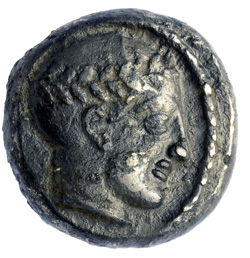
By Aryeh Savir

JERUSALEM (TNA)– The remnants of a rural town that was lived in for approximately two centuries during the Second Temple Period were uncovered near the ‘Burma Road’, on the main route to Jerusalem. In June 2013, Israel Natural Gas Lines began construction of the 35km-long project, which runs from the coast to the outskirts of Jerusalem, and during the construction this village was uncovered. Over the past six months the Israel Antiquities Authority (IAA) conducted an archaeological salvage excavation.
The excavations, which covered about 750 square meters, revealed a small rural town with a few stone houses and a network of narrow alleys. Each building, which probably housed a single nuclear family, consisted of several rooms and an open courtyard. According to Irina Zilberbod, excavation director on behalf of the Antiquities Authority, “The rooms generally served as residential and storage rooms, while domestic tasks were carried out in the courtyards.”
The town, which name is unknown, is nestled at the top of a hill 280 meters above sea level, with commanding views of the surrounding countryside. These large tracts of land were used to cultivate orchards and vineyards, which were the economic mainstay of the region’s early inhabitants.
The excavations have shown that the site reached the height of its development in the Hellenistic period (during the third century BCE), when Judea was ruled by the Seleucid monarchy following Alexander the Great, and that it was abandoned at the end of the Hasmonean dynasty.

It is not known why the site was abandoned, but it is probably related to economic problems and not to a violent incident. Jerusalem Regional Archaeologist Dr. Yuval Baruch explains: “The phenomenon of villages and farms being abandoned at the end of the Hasmonean dynasty or the beginning of Herod the Great’s succeeding rule is one that we are familiar with from many rural sites in Judea, and it may be related to Herod’s massive building projects in Jerusalem, particularly the construction of the Temple Mount, and the mass migration of villagers to the capital to work on these projects.”
The excavations yielded numerous and varied archeological findings, including basalt and limestone grinding and milling tools for domestic use, pottery cooking pots, jars for storing oil and wine, pottery oil lamps for domestic use, and over sixty coins, including coins from the reigns of the Seleucid King Antiochus III and the Hasmonean King Alexander Jannaeus.
In light of the finds, the Israel Antiquities Authority and the INGL have agreed that engineering plans for the gas line are to be revised, bypassing the site and preserving it as an accessible archaeological site for the public.
*
Aryeh Savir is a staff writer for the Tazpit News Agency in Israel. He may be contacted via en@tazpit.org.il
*
Your company’s sponsorship message for Tazpit News Agency stories in the San Diego Jewish World report may appear in this space below each individual article. Interested parties may contact editor Donald H. Harrison at (619) 265-0808 or donald.harrison@sdjewishworld.com